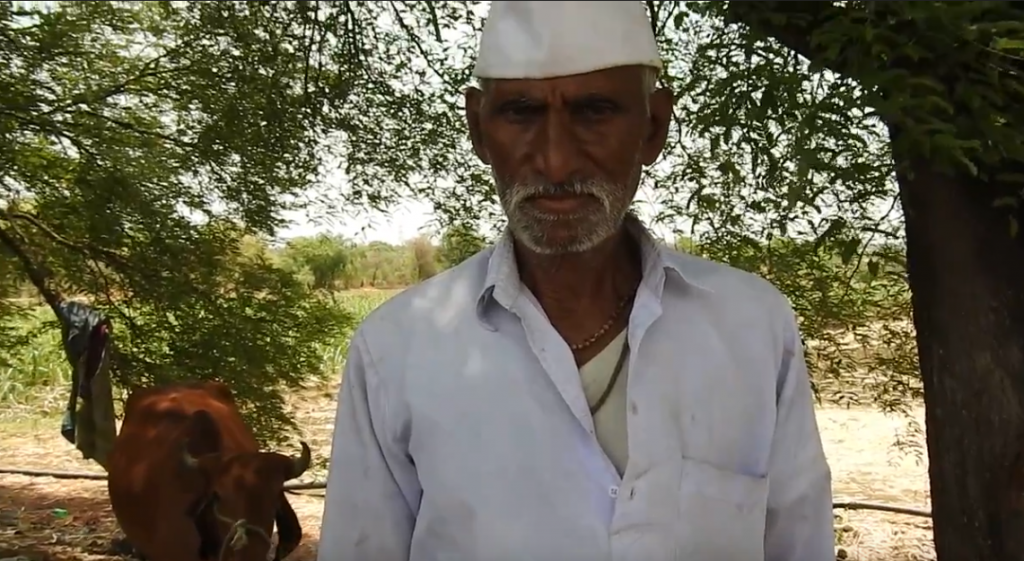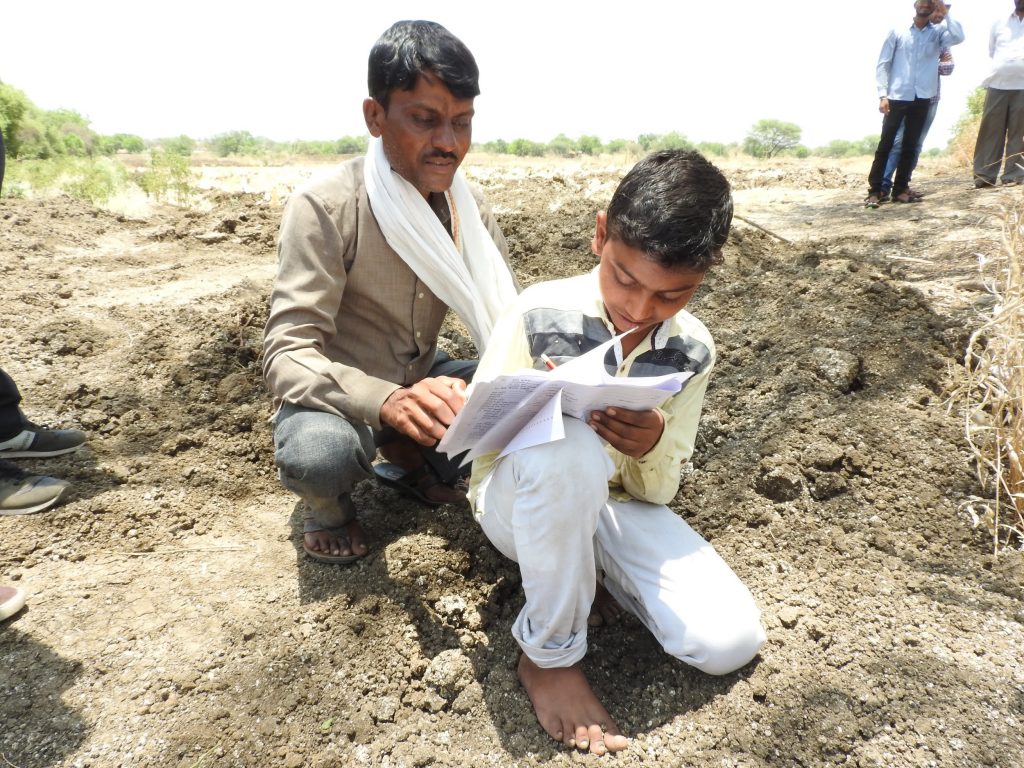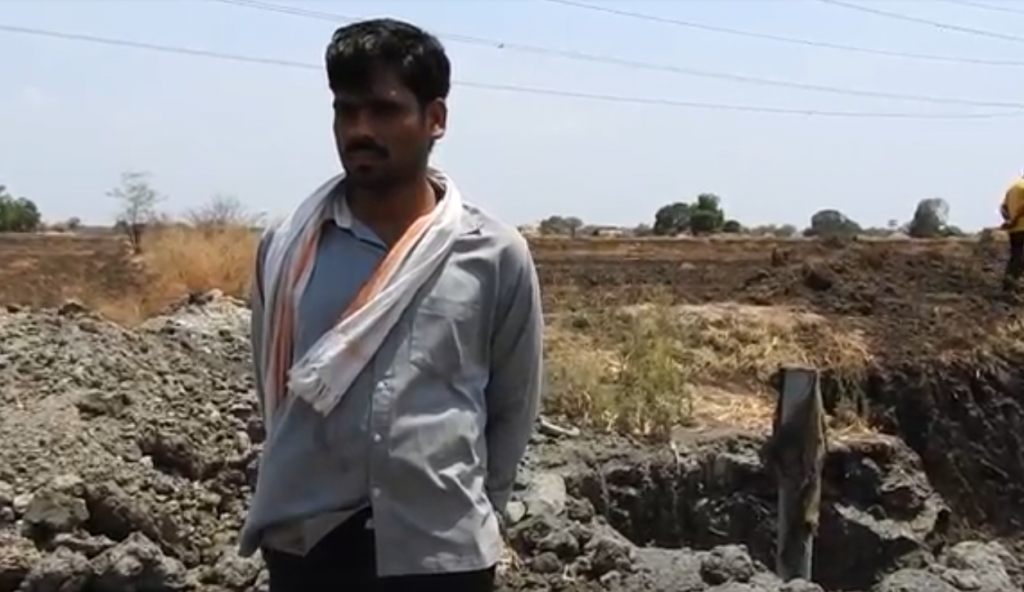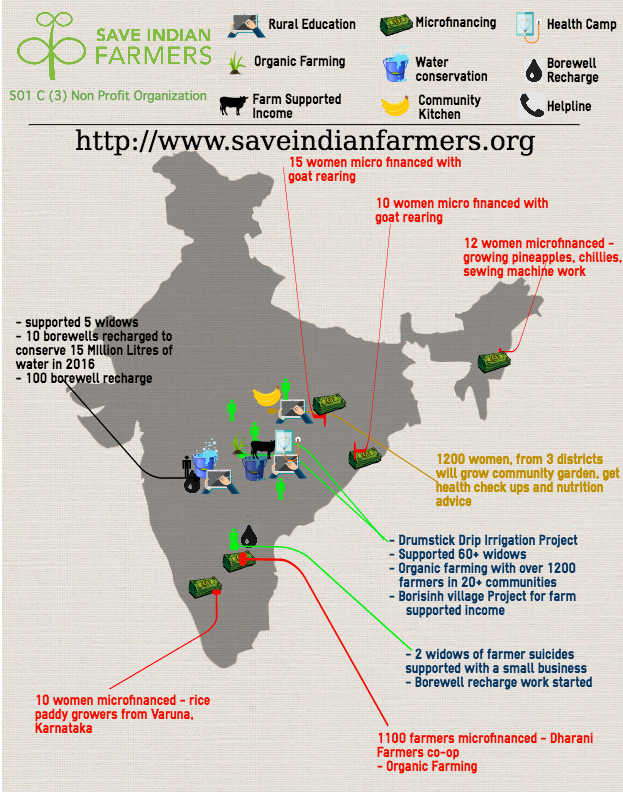Farmer Interviews by Palak Verma & Manish Malik
We visited Palaskhed in Amravati district of Maharashtra, where our borewell recharge work with Manavlok is in progress. I am sharing here some excerpts from our conversations with the farmers in these areas.

Farmer 1
Name: Mr. Shamrao Gaikwad
Occupation: Farmer
Dependent family members: 6
Total land: 15 Acres
Yieldable land: 15 Acres
Yearly income: 30,000 – 40,000
Water sources available: Borewell in the farm land, river near farm (water not available for the last 5 years), mostly dependent on monsoon.
Motor used: 5 HP
Load shedding: 8 hrs/day
Bank loan: Rs. 80,000
Crops grown each year: 2 (Soyabean/Tur & Jowar/wheat)
Cattle: 4 – majorly used for agricultural activities.
Fodder for cattle: dry (waste from jowar and waste from soybean)
His words:
Usually borewells go dry in the summer. However, this year water is available in the borewell in my farm due to last year’s above average rainfall and water conservation initiative. Yet, the borewell dispenses water for hardly 2 hours, which does not meet our needs. The yield of the crop depends greatly on availability of water. In the nearest river passing next to my farm, water was not available for the last 5 years. Successful implementation of borewell recharge will surely help me improve the yield of my crops. I feed my cattle with dry fodder – waste from jowar (kadaba) and waste from soybean, since green fodder is available only in the monsoon season. I am interested in buying more cows if we get green fodder in all seasons.
He praised Manavlok for their reliable support.
Farmer 2
Name: Mr Chavan
Occupation: Farmer
Dependent family members: 4
Total land: 20 Acres
Yieldable land: 20 Acres
Yearly earning: Rs. 15,000
Water sources available: Well available in the farm – water available this year, river (water not available for last 5 years), mostly dependent on monsoon, 2 borewells in the farm land (water available current year due to last year’s rain. Generally water not available in summer.)
Borewell depth: 275/180 feet
Motor used: 8/5 HP
Load shedding: 8 hrs/day
Crops grown each year: 2 (Soyabean/Tur & Jowar/wheat)
Cattle: 4 – majorly used for agricultural activities.
Fodder for cattle: green (from maize)
His words:
I have two sources of water for farming, borewell and well. Water is available in the bore well as well as from the well in the farm. This is due to last year’s above average rain and Water Cup initiative taken up by the village. However, the borewell hardly runs for an hour due to low groundwater level. Successful implementation of borewell recharge will help me to improve yield of the crops.
I usually produce green fodder from maize for cattle. I am aware of hydroponic technique and excited to implement it as less water is required. I am interested in increasing the number of livestock if green fodder is available with less water.
Farmer 3
Name: Mr. Muley
Occupation: Farmer
Dependent family members: 4
Total land: 3 Acres
Yieldable land: 3 Acres
Yearly earning: Rs. 40,000
Water sources available: Khatkali river nearby ~ 700-800 feet from farm (water not available for last 5 years), mostly dependent on monsoon, 1 borewell in the farm land (water available current year due to last year’s rain).
Borewell depth: 300 feet
Bank loan: No loan
Crops grown each year: 2 (Kapas & Tur)
Cattle: 4 majorly used for agricultural activities.
Fodder for cattle: dry (waste from jowar and waste from soybean)

His words:
I will not produce sugarcane as it requires more water and my yieldable land is small. In monsoon, my cattle and I are in danger, as the live electricity transmission wires (coming from Parali Thermal power plant) pass over my farm. Also, many farmers in my village have lost their lives after being struck by lightning.
______________________________________________________________________________________________________________





